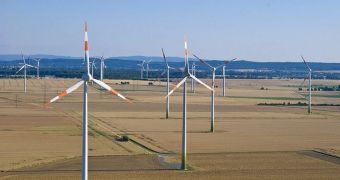A team of scientists from the Rensselaer Polytechnic Institute (RPI) is currently conducting work into a new type of technology that, once completed, could eliminate an important bottleneck from the path of producing renewable energy.
At this point, authorities and relevant actors avoid investing money in large-scale wind farms and solar power plants because they fear they will get a diminished return on their profit.
But the new, $2 million grant that the RPI team got from the US National Science Foundation (NSF) could change all that, experts at the Institute say.
What the group here needs to do is develop a new type of ceramic, that would underlie the development of a new generation of energy storage devices. Batteries cannot handle what is now being demanded of them.
The investigations effort will span an estimated four years. During this time, the RPI team will produce nanostructured capacitors that will have the ability to hold current with great efficiency.
These capacitors will need to be installed near solar power plants and wind farms, and their main objective will be to store the energy these facilities produce during the day, and then feed it into the power grid at night.
A vast array of applications lies in wait for the new energy-storage system, if researchers managed to create it so that it has a high power density, as well as the ability to charge and discharge very fast.
“The transformative nature of capacitive energy storage – a totally new approach to energy storage – will have a tremendous impact on the increased use and efficiency of wind and solar power, as well as conventional coal, nuclear, and hydroelectric generation,” explains expert Doug Chrisey.
He is a RPI Department of Materials Science and Engineering professor, and also the leader of the new investigations effort.
“Our proposed capacitors will be smaller, lighter, and more efficient than today’s batteries, and with no moving parts the capacitors should last forever,” he goes on to say.
“Everyone is looking for a truly innovative material to help meet future energy requirements, and we’re confident that our novel ceramic will help advance that conversation,” Chrisey argues.
Funds for the work came from the NSF Engineering Directorate, through the Emerging Frontiers in Research and Innovation (EFRI) Program. The money is planned to support the development of a strong power grid.
“Creating a novel ceramic material and developing a cost-effective, scalable method to achieve large-capacitive energy storage could be a big boost to our national economy and increase our global competitiveness,” Chrisey adds.
“What we need is an entirely new approach to energy storage, and we think ferroelectric glass composites could be the answer,” he concludes.

 14 DAY TRIAL //
14 DAY TRIAL //